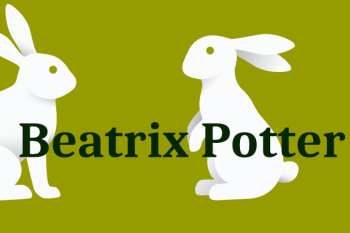5 Ways That Roald Dahl Changed Literature
There aren’t many writers who impacted 20th-century literature as Roald Dahl, and even now, many years after he died, Dahl is still popular and an inspiration for many kids’ books writers. In what ways did he change literature?
Roald Dahl changed literature by popularizing the creative and silly side of language. He also popularized children’s literature with happy and sad or scary elements, as well as criticized the adult world from the perspective of his child characters.
In many ways, he influenced today’s kids’ literature writers to explore and experiment with language and imagery. Dahl helped shape the literature we know and love today. In this article, I’ll provide five reasons Roald Dahl changed literature according to many people.

1. Dahl Popularized the Creative Side of Language
Dahl’s writing style is one of the most memorable worldwide. Whether in children’s literature or other genres, Dahl changed how writers use language in literature.
In the past, writing was a serious and tedious endeavor, and writers were serious people who wrote their ideas to paper to convey some important idea. Even children’s literature looked like a guidebook for kids on behaving appropriately.
These books were filled with all kinds of twisted punishments that awaited misbehaving kids.
Then, Dahl came to the scene with his silly phrases, invented words, and short sentences, and kids immediately fell in love with his language because he spoke from their perspective. For kids, language is fun and silly, and he knew that.
Dahl invented over 500 words in his books to show that language doesn’t have to be boring and sentences long and hard to follow. New children’s writers and even writers of adult fiction took his lead and started playing with language.
2. Important Themes Dahl Covered Are Still Relevant
Another way Dahl changed literature includes important themes he covered in his books. Unlike some writers before him, Dahl wasn’t interested in showing kids how to behave or speak properly. He wanted to tackle themes that were truly important to kids while growing up.
Dahl’s books are filled with themes such as:
- The importance of dreams
- Hope dies last
- The strong bonds of friendships
- Doing good deeds
- Love for reading
- Being different is okay
- Physical looks don’t matter
These themes are as important today as they were during Dahl’s time. The last two from the list are especially popular themes in modern kids’ books. When Dahl was writing his books, being different was looked down upon, and he tried to present various characters in his books that were so different no one believed they existed.
Two examples of this were The BFG, featuring a friendly giant, and The Witches.
3. Dahl Popularized His Version of Children’s Literature
Children’s literature writers before Dahl thought that children didn’t understand deeper notions and topics, so they wrote books with only silly episodes to make kids laugh.
Some also wrote books to scare kids.
Dahl introduced his version of children’s literature that combined these aspects and introduced new ones, and instead of writing just about silly topics, he thought kids could understand more serious issues.
That’s why he included serious topics for kids to reflect on. A good example is poverty, which Dahl writes about in his Charlie and the Chocolate Factory.
We learn so much about Charlie’s life, as he isn’t just a happy kid who wants to go to the famous chocolate factory. He lives with his family in a tiny house because they’re extremely poor, and the only beam of hope for Charlie is to win the golden ticket and go to the chocolate factory.
Therefore, in Dahl’s kids’ books, characters became more developed, no matter how “insignificant” to the plot. Readers knew their lives and struggles. In turn, they could relate to these characters who’re supposed to be happy as kids but often can’t be for various reasons.
Did you know Charlie and the Chocolate Factory’s still one of the most-read children’s books worldwide? Check my other article, 9 Most Read Children’s Books in the World, to see the other eight books. They’d make perfect presents for the kids in your family.
4. Dahl’s Criticism of the Adult World
One of the most important ways Dahl changed literature is through his criticism of the adult world. He wasn’t just an adult author writing for kids, and instead, he wanted to present the world the way kids see it.
Often, it’s a scary world filled with angry and nervous adults trying to ruin kids’ fun time. In Dahl’s books, the real heroes are children, while the adults are usually villains. Matilda is one of the best examples of Dahl’s criticism of adults.
When you’re a child, the two places where you spend most of your time are home and school. In the book, these two places are Matilda’s worst nightmares because of the adults there, including her parents and the headmistress.
Therefore, Dahl uses satire to mock the adult world as being too serious and cruel to children, and the worlds they create are often gloomy and lifeless. In a world run by adults, Charlie (Charlie and the Chocolate Factory) is poor, and Sophie (The BFG) has to live in an orphanage.
Adults in Dahl’s books are often described as:
- Ugly
- Loud
- Big
- Obese
- Strict
- Crazy
The New Yorker wrote an article about Dahl’s physical characteristics of his adult characters. The article stated that these characteristics also reflect their moral and emotional state, so they’re ugly on the outside because they’re “ugly” on the inside.
These stark images in Dahl’s books differed from other, more optimistic, kids’ books of his time. His style changed how we understand children’s perspectives in literature today.
Dahl’s Sad Childhood
One of the reasons why Dahl represented the adult world as cruel’s because he also had a sad childhood.
His father died when he was pretty young, and the principal of the school Dahl attended would beat him for being playful. He had to change schools, but principals and his mother always pushed him to be somebody he wasn’t. So, he knew how many kids felt while growing up, and his “revenge” was to write negatively about the adults.
Soon, other writers who felt the same followed.
5. Dahl’s Unique Style Changed Literature for the Better
Apart from satire, Dahl incorporated many other stylistic techniques to create unique worlds and ideas in his books. In the past, those “serious” writers thought you couldn’t use these techniques in children’s books, but he proved otherwise.
Some stylistic techniques Dahl used in his books include:
- Straightforward sentences
- Irony
- Darker tone
- Spoonerisms
Sources
- Biography: Roald Dahl
- The New Yorker: The Candy Man
- Britannica: Charlie and the Chocolate Factory
- British Library: Write Your Own Nonsense Dictionary
- Actualidad Literatura: Roald Dahl Books
- The Dorset Book Detective: How Roald Dahl Changed Children’s Literature for the Better
- Medium: The Haunting of Roald Dahl






